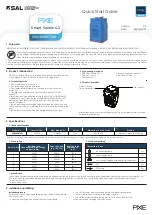
neighbor peer-group passive
Enable passive peering on a BGP peer group, that is, the peer group does not send an OPEN message,
but responds to one.
Z9500
Syntax
neighbor
peer-group-name
peer-group passive [
sessions
]
To delete a passive peer-group, use the
no neighbor
peer-group-name
peer-group passive
command.
Parameters
peer-group-
name
Enter a text string up to 16 characters long as the name of
the peer group.
Defaults
Not configured.
Command
Modes
ROUTER BGP
Command
History
This guide is platform-specific. For command information about other platforms,
refer to the relevant
Dell Networking OS Command Line Reference Guide
.
The following is a list of the Dell Networking OS version history for this command.
Version
Description
9.2(1.0)
Introduced on the Z9500.
8.3.19.0
Introduced on the S4820T.
8.3.11.1
Introduced on the Z9000.
8.3.8.0
Introduced the
limit
keyword on the S4810.
8.3.7.0
Introduced on the S4810.
7.8.1.0
Introduced on the S-Series.
7.7.1.0
Introduced on the C-Series.
Usage
Information
After you configure a peer group as passive, assign it a subnet using the
neighbor
soft-reconfiguration inbound
command.
For passive eBGP limits, the Remote AS must be different from the AS for this
neighbor.
Related
Commands
neighbor soft-reconfiguration inbound
— assigns a subnet to a dynamically
configured BGP neighbor.
426
Border Gateway Protocol
















































